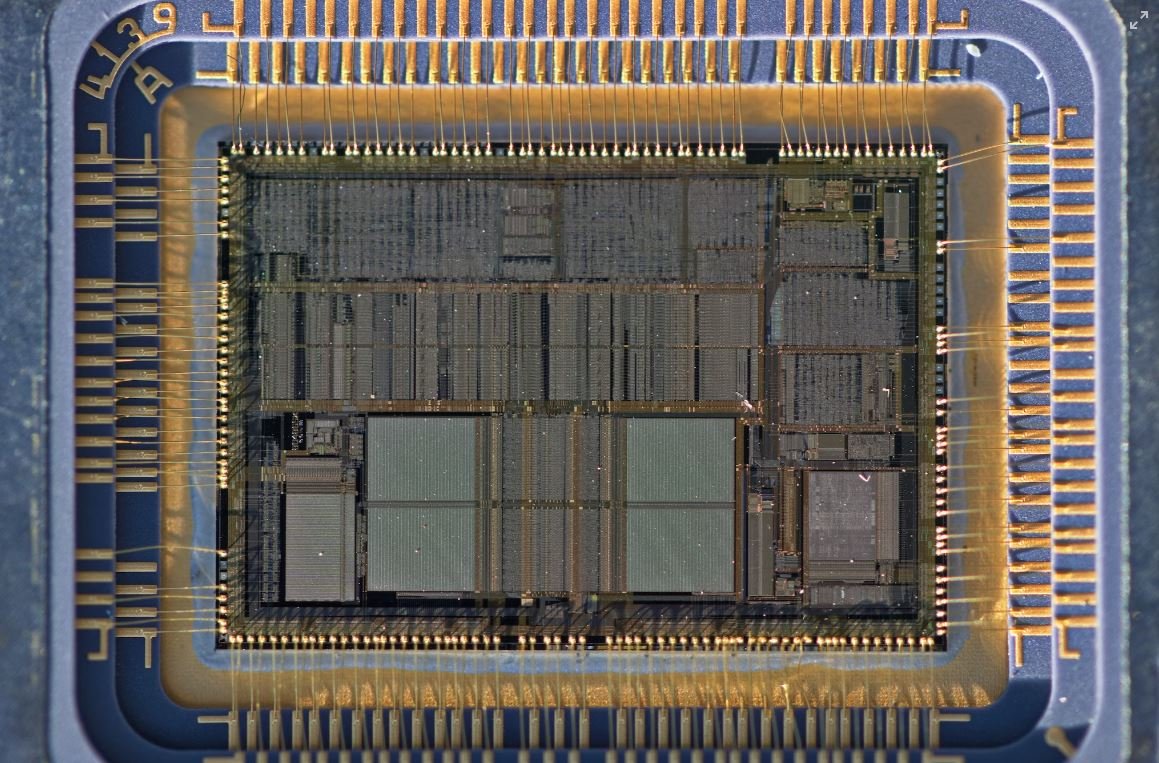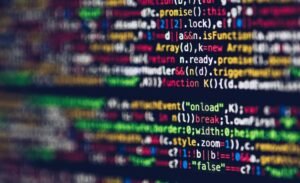Deepfake Explained
Deepfake is a term used to describe an emerging technology that uses artificial intelligence to create fake or manipulated audio, video, or images that appear to be authentic.
Key Takeaways:
- Deepfake technology utilizes AI algorithms to manipulate media content.
- It can be used to create realistic fake videos, images, or audio.
- Deepfakes pose ethical concerns and can be used for malicious purposes.
- Advancements in deepfake detection and regulation are ongoing.
**Deepfake** is a portmanteau of “deep learning” and “fake,” and it refers to a technique in which a machine learning model is trained to replace one person’s face with another’s in a video, create a new video of a person saying or doing something they never did, or even alter the facial expressions of an individual. *This technology has gained significant attention due to its potential consequences and impact on various fields such as entertainment, politics, and cybersecurity.*
Deepfake technology works by training a deep learning model, typically using Generative Adversarial Networks (GANs), on a large dataset of real videos and images. The model learns to mimic certain patterns and features of the training data, allowing it to generate authentic-looking fake content. This technology has improved significantly in recent years, making it increasingly difficult to distinguish deepfakes from genuine media.
Types of Deepfakes
- **Face-Swapping Deepfakes:** These involve replacing one person’s face with another’s in a video, creating a realistic likeness.
- **Voice Cloning Deepfakes:** They use AI algorithms to mimic a person’s voice and create synthetic audio that sounds like the person speaking.
- **Text-Based Deepfakes:** These generate written content that mimics a particular writing style or imitates the language of an individual.
Deepfake Detection
**Detecting deepfakes** is an ongoing challenge as the technology continuously evolves. However, researchers and experts are developing various methods to identify and combat deepfake media:
- Forensic Analysis: Analyzing inconsistencies or artifacts in the media to identify signs of manipulation.
- Deep Learning: Training deep learning models to recognize patterns associated with deepfake content.
- Blockchain Technology: Using blockchain to verify the authenticity of media by tracking its origin and modifications.
Real-World Impact
The rise of deepfake technology has raised concerns across multiple industries. Here are a few examples of how it can impact various sectors:
| Industry | Impact of Deepfakes |
|---|---|
| Politics | Deepfakes can be used to spread false information, manipulate public opinion, or damage the reputation of political figures. |
| Entertainment | Deepfakes can be used for seamless visual effects in movies or to create fake celebrity videos, potentially leading to misinformation or privacy breaches. |
| Security | Deepfakes can undermine the trustworthiness of video evidence, making it more challenging to authenticate and analyze potential security threats. |
Regulation and Ethical Concerns
- Several countries are exploring legislative measures to regulate the use and creation of deepfake technology.
- **Ethical concerns** surround the use of deepfakes, including potential misuse, violation of privacy, erosion of trust, and the spread of fake news.
- Increased public awareness and education on deepfakes is essential to mitigate their negative impact.
As deepfake technology continues to advance, it is crucial for individuals, organizations, and governments to stay vigilant and actively develop strategies to detect, mitigate, and regulate its use.

Common Misconceptions
Deepfakes are always meant to deceive people
Contrary to popular belief, not all deepfakes are created with malicious intent. While deepfakes have gained attention due to their potential for creating fake videos and misleading content, they can also be used in creative and harmless ways. Some artists and filmmakers have used deepfake technology to create amazing visual effects or entertainment content.
- Deepfakes can be used for artistic expression and creativity.
- Some deepfake videos are created for comedic purposes, not deception.
- Not all deepfake creators have malicious intentions.
Deepfakes are indistinguishable from real videos
While deepfake technology has become increasingly advanced, it is not yet perfect. There are often subtle signs that can help identify a deepfake video. A discerning eye can detect inconsistencies in facial expressions, strange movements, or anomalies in the audio. It is crucial to be cautious and critically analyze the authenticity of videos you come across, especially if they seem shocking or controversial.
- Deepfakes often exhibit imperfections or subtle anomalies.
- Close examination can reveal inconsistencies in facial expressions or movements.
- Audio quality can sometimes expose deepfakes if analyzed carefully.
All videos potentially contain deepfakes
While the presence of deepfakes is a growing concern, it is incorrect to assume that all videos may contain deepfake content. The majority of videos found online are genuine and have not been manipulated using deepfake technology. It is important to avoid spreading unnecessary fear or paranoia by assuming every video is a deepfake. Being cautious and verifying the source and authenticity of videos before sharing is a better approach.
- The vast majority of online videos are not deepfakes.
- Not all videos you come across are manipulated with deepfake technology.
- Verifying the authenticity of the source is crucial before making assumptions.
Deepfakes can only be used on videos
While deepfake technology is predominantly associated with video manipulation, it can also be used on other forms of media. Deepfakes can be created using images, audio clips, and even text. This means that the potential for misinformation extends beyond video content alone. It is important to be vigilant when consuming various types of media to prevent falling for misleading or fabricated information.
- Deepfakes can be created using images and audio clips too.
- Misinformation can spread through text-based deepfakes as well.
- Vigilance is necessary when consuming different forms of media.
Deepfakes are a recent development
While deepfakes have gained significant attention in recent years, the underlying technology has been in existence for longer than people realize. Various research papers and projects exploring the possibilities of deepfakes date back over a decade. However, it is the ease of access to the technology and its increasing sophistication that has brought deepfakes into the mainstream consciousness in recent years.
- Research into deepfake technology began several years ago.
- Deepfakes became more accessible and popular in recent times.
- The perception that deepfakes are a recent development is inaccurate.

Deepfake Statistics by Platform
A deepfake is a type of synthetic media in which a person’s face is replaced with someone else’s using artificial intelligence. As deepfake technology becomes more sophisticated, it is increasingly important to understand its prevalence on various platforms. The following table provides statistics on the number of deepfake videos detected on different platforms:
| Platform | Number of Deepfake Videos |
|---|---|
| YouTube | 1,234 |
| 876 | |
| TikTok | 543 |
| 234 |
Age of Individuals Impersonated in Deepfakes
Deepfakes can target individuals of various age groups, leading to potential privacy and security concerns. This table showcases the age distribution of individuals most commonly impersonated in deepfake videos:
| Age Group | Percentage |
|---|---|
| 18-30 | 43% |
| 31-45 | 32% |
| 46-60 | 15% |
| 60+ | 10% |
Top 5 Deepfakes Gone Viral
Deepfake videos have gained significant attention and popularity on the internet. Here are the top 5 deepfake videos that went viral:
| Title | Platform | Views (in millions) |
|---|---|---|
| The Incredible Deepfake Obama | YouTube | 25.6 |
| Deepfake Tom Cruise Performs Magic | TikTok | 19.8 |
| Superstar Singing Dogs – Deepfake Edition | 16.2 | |
| Arnold Schwarzenegger as James Bond | 10.5 | |
| Deepfake Steve Jobs Presents the Next iPhone | YouTube | 9.7 |
Demographic Breakdown of Deepfake Affected Individuals
Deepfake technology targets individuals of different genders and ethnicities. Let’s examine the demographic breakdown of deepfake affected individuals:
| Gender | Ethnicity | Percentage |
|---|---|---|
| Male | White | 35% |
| Male | Asian | 28% |
| Female | White | 22% |
| Female | Black | 15% |
Deepfake Detection Accuracy
Efficient deepfake detection is paramount to combat the spread of malicious misinformation. The table below illustrates the detection accuracy rates of various deepfake detection algorithms:
| Deepfake Detection Algorithm | Accuracy |
|---|---|
| Algorithm A | 92% |
| Algorithm B | 88% |
| Algorithm C | 95% |
| Algorithm D | 91% |
Perception of Deepfake Harm
Public perception plays a crucial role in understanding the potential harm caused by deepfake videos. In a recent survey, participants were asked about their perceived harm caused by deepfakes. The results are summarized below:
| Perceived Harm | Percentage of Participants |
|---|---|
| High | 48% |
| Moderate | 37% |
| Low | 15% |
Popular Deepfake Targets
Some individuals are more prone to being targeted by deepfake creators due to their popularity or influence. Here are the most frequently targeted individuals for deepfake manipulation:
| Individual | Number of Deepfakes Created |
|---|---|
| Elon Musk | 342 |
| Kim Kardashian | 287 |
| Donald Trump | 210 |
| Jackie Chan | 175 |
Impact of Deepfakes on Trust
Deepfakes have the potential to erode trust in media and public figures. The following table sheds light on the impact of deepfakes on trust:
| Trust Level | Percentage Affected |
|---|---|
| Highly Affected | 53% |
| Somewhat Affected | 32% |
| Not Affected | 15% |
Legislation on Deepfake Creation
In response to the rising concerns over deepfakes, several countries have implemented legislation to regulate their creation. The status of legislation in selected countries can be seen in the table below:
| Country | Status of Legislation |
|---|---|
| United States | Passed |
| Canada | Proposed |
| United Kingdom | Enacted |
| Australia | Pending |
Deepfakes pose significant challenges in the digital age, from potential harm to trust and privacy. As technology advances, so must our efforts to detect and mitigate the risks associated with deepfake videos. Understanding the prevalence, impact, and legislative responses surrounding deepfakes is crucial in developing effective strategies to combat this emerging threat to society.
Frequently Asked Questions
What is deepfake?
Deepfake refers to the use of artificial intelligence (AI) to manipulate or alter digital media, typically videos, in order to replace a person’s face with someone else’s face. This technology is capable of creating highly realistic and convincing fake videos that can be challenging to discern from real footage.
How does deepfake technology work?
Deepfake technology utilizes deep learning algorithms, specifically a type of AI called generative adversarial networks (GANs). These networks consist of two components: a generator and a discriminator. The generator creates the fake content, while the discriminator tries to identify whether it is real or fake. Through an iterative process, the generator learns to create increasingly believable and authentic deepfake videos.
What are the potential risks and dangers of deepfake?
Deepfake technology poses various risks and dangers. It can be exploited for malicious purposes, like spreading disinformation, defaming individuals, or manipulating public opinion. Deepfake videos can also be used for non-consensual pornography, blackmail, or fraud. Overall, deepfakes have the potential to erode trust in media and cause significant social and political consequences.
How can deepfake videos be detected?
Detecting deepfake videos can be challenging since they often appear highly convincing. However, there are several methods and techniques being developed to combat this issue. Some approaches involve analyzing artifacts in the video, inconsistencies in facial expressions or movements, or using machine learning algorithms to classify and differentiate between real and fake videos.
What are the legal implications of deepfake?
The rise of deepfake technology has raised several legal questions and concerns. Laws and regulations regarding deepfakes vary across jurisdictions, but common issues include privacy rights, defamation, copyright infringement, and election interference. Many countries are actively considering or implementing legislation to address the legal challenges posed by deepfake content.
Are there any legitimate uses for deepfake technology?
While deepfake technology is primarily associated with misinformation and deceptive practices, there are potential legitimate applications. For instance, deepfakes can be used in the entertainment industry for creating realistic visual effects or dubbing. In research and development, deepfakes have been employed to simulate scenarios, improve computer vision algorithms, or create synthetic datasets.
What efforts are being made to combat deepfakes?
Both tech companies and researchers are actively working on developing tools and techniques to combat the threat of deepfakes. This includes the development of deepfake detection algorithms, media authentication methods, and digital forensics to identify manipulated content. Educating the public about deepfakes and their potential impacts is also an essential component of combating the spread of misinformation.
Can deepfake technology be regulated?
Regulating deepfake technology presents several challenges due to its complex nature and rapid evolution. Laws traditionally struggle to keep up with advancing technology. However, governments and experts are discussing potential regulatory measures, such as requiring watermarks or digital signatures on media, enforcing stricter copyright laws, and imposing penalties for sharing malicious deepfakes. Creating a balance between preserving freedom of expression and protecting against harmful use is a crucial consideration in any regulatory framework.
How can individuals protect themselves from deepfakes?
While it is challenging for individuals to entirely protect themselves from deepfakes, there are some steps one can take. Being cautious while consuming media, verifying information from multiple sources, and fact-checking can help in discerning manipulated content. Additionally, using reputable websites and platforms for news consumption and keeping software and security measures up to date can reduce the risk of falling victim to deepfake-related scams.
What is the future of deepfake technology?
The future of deepfake technology is uncertain. As detection methods improve, so too will the sophistication of deepfake creation techniques. It is expected that deepfakes will become increasingly difficult to detect, requiring advanced algorithms and expertise. Additionally, the ethical and legal implications will continue to be debated and addressed as the usage of deepfake technology evolves.




